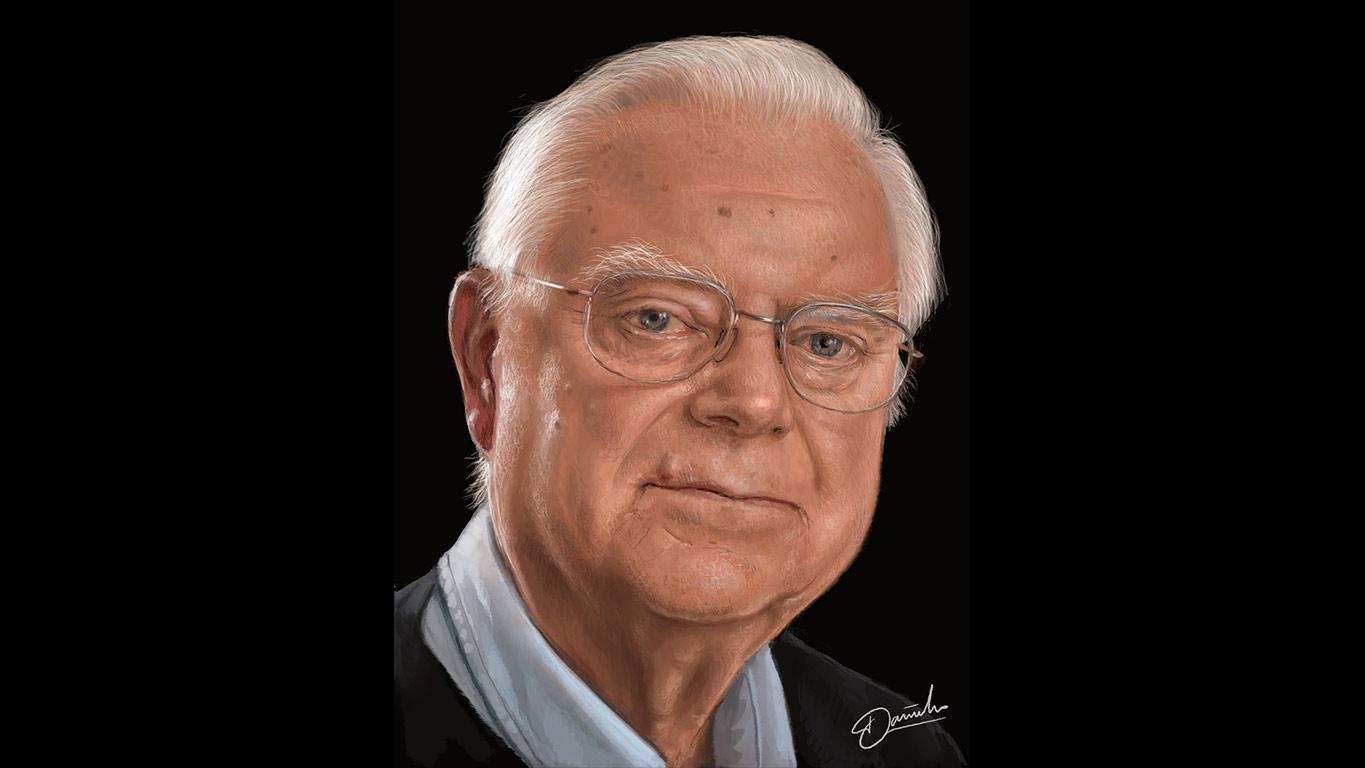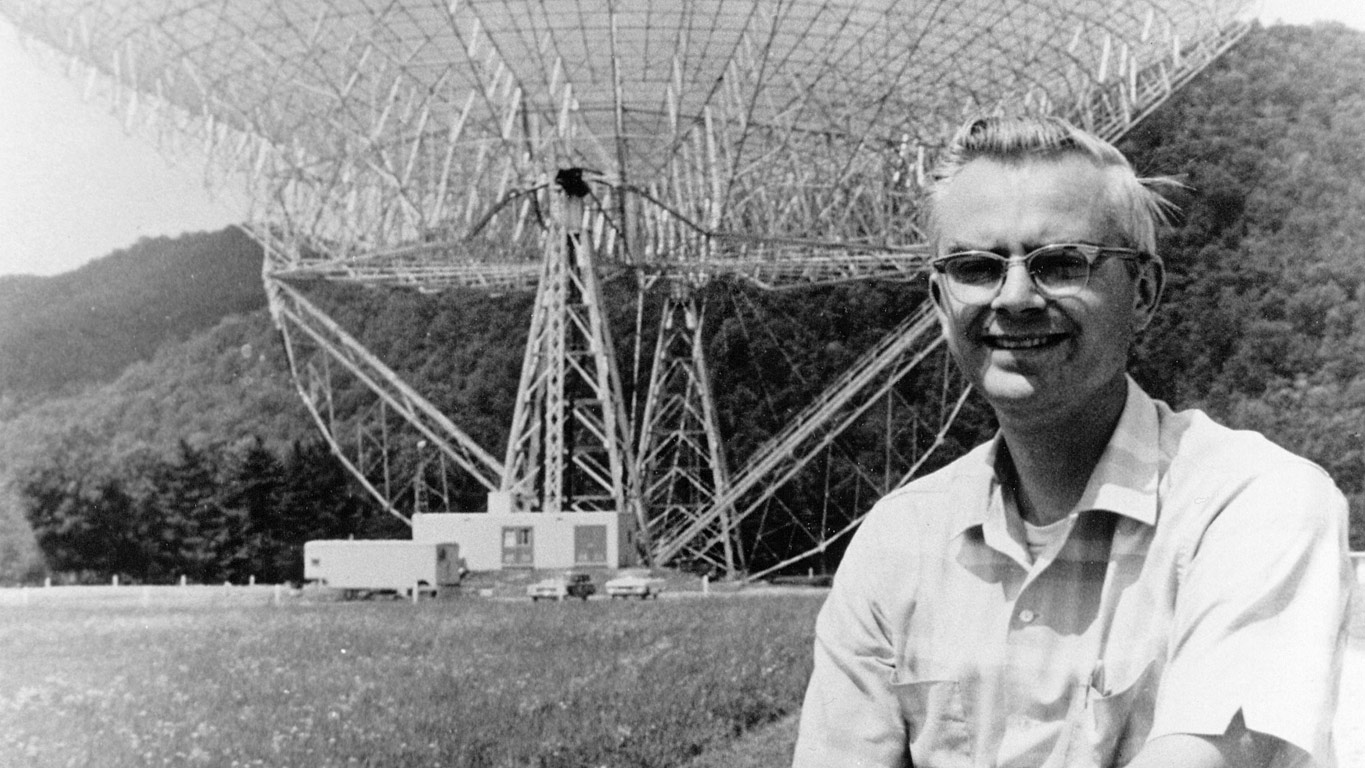
Frank Drake, an American astronomer, was the first in the modern era to probe the skies for evidence of extraterrestrial intelligence. Drake sought narrow-band microwave radio signals coming from nearby star systems in an experiment he named Project Ozma.
Deep thinkers had speculated about extraterrestrials for at least two thousand years. In the 19th century, attempts by scientists to find other-worldly beings in our solar system (mostly on Mars) led to multiple claims of success. We now know that these efforts were scientifically naïve. Most famous was the dramatic assertion that Mars was irrigated by a network of deliberately constructed canals. By the 1920s, this became a laughable claim as astronomers learned more about the Red Planet.
But Drake’s approach to locating extraterrestrials by listening for radio waves has not been overtaken by subsequent research. His strategy is still enthusiastically deployed six decades after his pioneering SETI experiment. This is a truly remarkable circumstance, and nearly unprecedented in exploration. Sixty years after Lewis and Clark used canoes and native guides to catalog the upper Missouri, no one would have considered a new reconnaissance of western territory with military officers and frontiersmen. Too much had changed, and the approach would have been different.
No similar revolution has occurred in our search for extraterrestrials, although today’s equipment is vastly better. Drake himself notes that today’s receiver technology can “duplicate the amount of data that’s been collected by previous experiments in just a few seconds.” That’s a nod to today’s stunningly capable digital technology. But the strategy hasn’t altered.
That isn’t to say that there aren’t other ways to hunt for extraterrestrials. One could, for instance, look for massive engineering projects constructed by highly advanced societies. But such artifacts require that the aliens marshal truly enormous levels of expertise, energy, and substance if such works are to visible at great distance. In contrast, radio signals can be easily detectable from light-years away even if the extraterrestrials devote only modest effort and kilowatt-hours to their production.
More importantly, radio (or other electromagnetic signaling, such as lasers) makes sense because it can be used to convey information as fast as the universe will allow. Drake’s assumption is that no matter how advanced an alien civilization’s technology may be, their use of radio for sending information would be as long-lasting as the use of gears.
Consequently, a search for radio transmissions is not a parochial enterprise. It doesn’t assume that the aliens are like us in any particular, only that they live in the same universe, with the same physics. Drake’s approach to SETI is the ultimate in cosmic modesty.
Project Ozma established the technical choices for nearly all subsequent radio SETI experiments, such as sifting through the microwave spectrum for narrow-band signal components. Drake is also hailed for the eponymous equation that he devised a year after Project Ozma to gauge the likelihood that a SETI search would succeed.
But what is seldom remembered is the boldness of his experiment. Project Ozma required a level of daring that few science projects ever demand.

When the young radio astronomer sought permission from Otto Struve, the director of the National Radio Astronomy Observatory, to undertake his experiment, they agreed to keep it quiet – a rare circumstance in research.
At that time, “no really serious scientist would work on this subject,” Drake recalls. “It was a taboo subject in astronomy. Nobody else was doing a search because they were all afraid. I was too dumb to be afraid.”
Or too bold. Few researchers feel that their investigations are so radical that they must keep their work under cover. Drake’s bravery is surely one of the most remarkable aspects of the first SETI experiment.
To call Drake a pioneer borders on the facile. Like all the enterprises that have famously ventured beyond the known, it all seems easy and obvious in retrospect. But the trail blazed by Frank Drake is still trod by those who follow him.
For scientists who seek to learn if the Milky Way shelters other inhabitants, Drake’s strategy remains the untarnished gold standard. But in celebrating his pioneering work, we should not forget that he was more than prescient; he was courageous.
Learn more about Frank Drake:
- Lee este artículo en español: El padre de SETI
- The Drake Equation: https://www.seti.org/drake-equation-index
- Watch an interview with Andrew Fraknoi and Frank Drake: https://www.youtube.com/watch?v=HPQz-kdaxNo
- The Origin of the Drake Equation by Frank Drake and Dava Sobel: https://astrosociety.org/file_download/inline/58ee6041-5f61-4f88-8b15-d2d3d22ab83d
Updated: July 2021.





